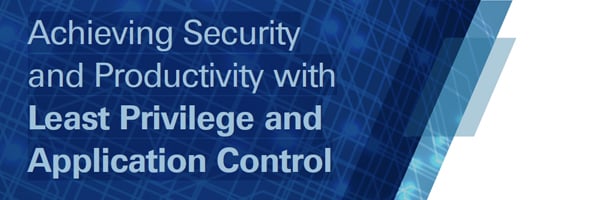

Principle of least privilege in security software#
Privilege creep occurs when software developers usually develop more access rights and permissions beyond what users need to do their job. But, POLP is also about monitoring access for those users who do not require it. Many people believe that the Principle of Least Privilege is nothing but taking away privileges from users. In such a situation, the IT team will have to recreate access and privileges so that it becomes possible to carry out specific tasks. What do you mean by privilege creep?īusiness organisations often have to take away all administrative rights from users. This is applicable for systems, end-users, networks, processes, applications, databases, and to every other facet in an IT environment. The Principle of Least Privilege can be applied to every level of a system for better security. With the implementation of the Principle of Least Privilege, it is possible to contain compromises so that they do not spread to the system at large. This is because it becomes difficult for attackers to access sensitive data or critical information by compromising low-level user applications, devices or accounts. In an IT environment, following the least privilege principle helps in reducing the risks of cyber attacks and related threats. The Principle of Least Privilege functions by providing limited access for performing any required job. How does the Principle of Least Privilege function? And this is successfully possible with the implementation of the Principle of Least Privilege. It is essential that privileged credentials are secured and centrally managed and have flexible controls so that compliance requirements and cybersecurity can be balanced with end-user and operational needs. With effective enforcement of least privilege approach to security, it can be assured that even non-human tools have requisite access needed. This is among cyber securities’ best practices and a crucial step towards protecting privileged access to high-value assets and data. Therefore it is evident that the least privilege extends much beyond human access. Along with restricting access for resources and files, the Principle of Least Privilege also limits access rights for systems, applications, and processes to only authorised individuals.


 0 kommentar(er)
0 kommentar(er)
